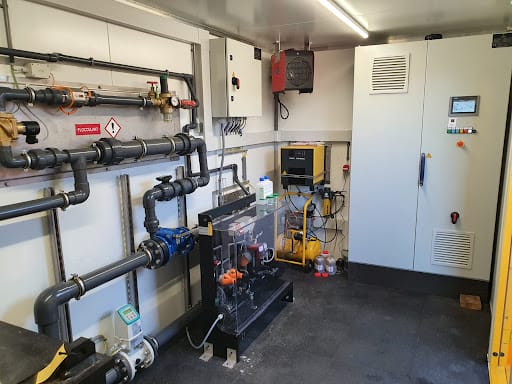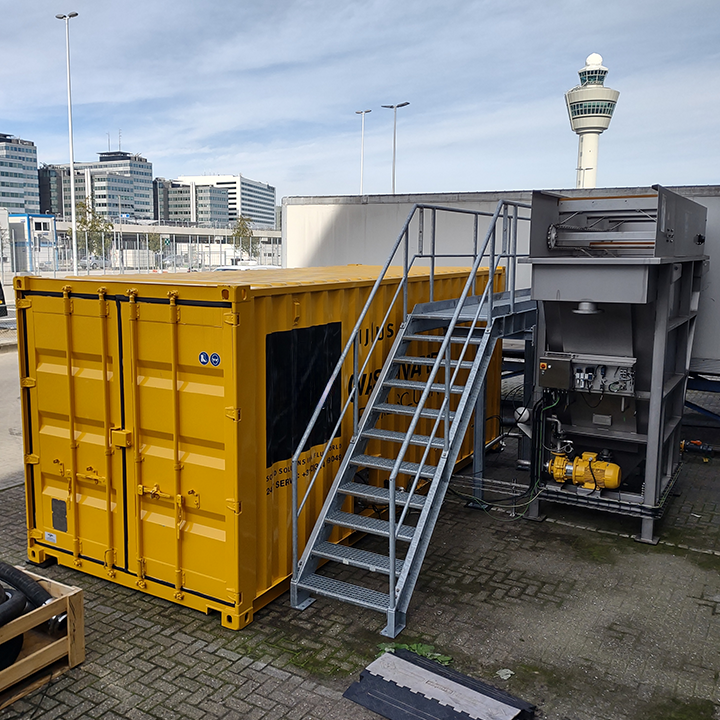Slibontwatering
SlibontwateringNSP-installatie

De kosten voor slibafvoer vormen een aanzienlijk deel van de operationele kosten voor afvalwaterbehandelingssystemen. Met behulp van ontwateringstechnieken kunnen deze kosten aanzienlijk worden verlaagd door de integratie van ontwaterd slib in een biogasinstallatie te vergemakkelijken. Dit levert een hogere biogasproductie op.
Tijdens het slibontwateringsproces door de NSP wordt op efficiënte wijze sterk geconcentreerde ontwaterde koek en schoon centraatwater geproduceerd. Hierdoor wordt het slibvolume aanzienlijk verminderd, wat leidt tot aanzienlijke kostenbesparingen bij het afvoeren. De NSP bestaat uit vooraf gemonteerde componenten, waardoor het apparaat flexibel is en eenvoudig kan worden geïnstalleerd. De NSP kan naadloos worden geïntegreerd in grotere afvalwaterbehandelingsprojecten of zelfstandig worden gebruikt in nieuwe of bestaande faciliteiten.
Ontdek de voordelen van mobiele afvalwaterbehandeling voor uw installatie
Talk to an expert
Veelgebruikte toepassingen
Fysisch-chemisch slib en biologisch slib
Vermindering van het slibvolume met een doorsnee drogestofgehalte van 20%. Er wordt meer dan 95% vaste stof afgevangen, waardoor de behandelingskosten van het filtraat dalen.
Nieuwe en/of bestaande afvalwaterbehandelingsinstallaties
Een onmiddellijke oplossing bieden voor zowel nieuwe als bestaande afvalwaterbehandelingsinstallaties. Hierdoor wordt een effectief slibbeheer gegarandeerd, worden operationele verstoringen beperkt en wordt een praktische aanpak geboden voor uiteenlopende slibvolumes en -situaties.










